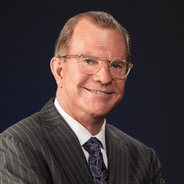5 minutes
It’s time to welcome the next generation with open arms and a board seat.
The demographic challenges facing credit union membership are cause for ongoing conversations at every gathering of boards and executives. A declining Baby Boomer population has been a trusted foundation for credit unions. Millennials (born between 1981 and 1996) have challenged us to polish our branding, refresh our delivery systems and move toward expensive and risker digital platforms to enhance service. Today credit unions straddle a wide age range with younger members harder to recruit to our membership. It’s time to welcome the next generation with open arms and possibly a board seat or two.
Gen Z is a gift to our cooperative banking model, and its members will represent 40 percent of the U.S. population by 2020. Born between 1997 and 2016, members of Gen Z hold a set of core values and interests similar to what has made CUs great. Unlike their predecessors, Gen Z is concerned about financial security, building wealth, the economy and having a social impact.
These approximately 17 million young folks are the most racially diverse population in a while. They are more tolerant of racial, sexual and gender diversity than previous generations.
They have postponed sexual activity, are getting their driver’s licenses and drink less than prior generations. They prefer stable institutions and are prudent, wanting to save more rather than spend. While quite entrepreneurial, when they work they prefer secure jobs and desire a commitment from their employers and those that serve them. They are more conservative (they don’t want student debt) and generally feel less secure, including reporting greater worry than preceding generations. Growing up with mobile technology, they are digitally connected and learn new information quite quickly. Gen Z is the first generation of truly digital natives.
Entering the workforce now, Gen Z is causing such major employers as Ernst & Young, LinkedIn and Intuit to adapt to their values and characteristics to integrate more “YouTube” like and digital offerings into training and development. Seventy percent of current teens are already working freelance or entrepreneurially and they expect to have multiple careers by the time they are 30. They are more likely to make work commitment a central part of their life. If their jobs have a positive environmental, economic or community impact, they think that’s all the better. In all, except for the entrepreneurial bent, Gen Z is shaking up society with values and aspirations similar to the Silent Generation.
How do credit unions attract this generation? Start by focusing on values that have sustained credit unions for years—these are the same ones that members of Gen Z value: security, stability, support for wealth building, community citizenship and volunteering, creating something, education and knowledge, and ethics. Credit unions that get into high schools, community colleges and universities and build brand value will see their efforts pay off. This generation researches on the internet so a serious digital presence demonstrating your values will appeal to their experience and sense of wanting to learn. Credit unions that partner with fresh business models and maybe even sponsor entrepreneurial centers at schools or in the community will achieve greater recognition with this generation.
This is also where governance enters the picture. As your credit union board continues to age, it may be timely to invite a member of Gen Z onto the board. Your board is part of your brand and branding your credit union as “youth” friendly can create a conversation in the Gen Z community that will pay dividends in new members. A board member who’s part of Gen Z will guide you in understanding what this generation desires, how they prefer to interact with banking, and what values your brand should reflect. They will lead conservatively yet demand constant refresh.
I’ve always felt our boards needed about a third of the board to be 30 or younger. We have been missing learning from younger generations for years while we continue an old model of aging boards with 20-years plus of board service. Gen Z is a smart generation, conservative and hard-working and its members learn quickly. Current board members who think understanding credit unions is rocket science will be surprised by how quickly the Z generation will catch on and become a valuable board member. They will be committed to service as a value and will come prepared and eager to fulfill their board responsibilities. The Gen Z population is up to the task of governance and may be the perfect cadre of leaders to help us transition into a truly digital era.
How do you find the right Gen Z for your board? Like any other search for a board member, go where the target population is. Who in your community works with youth? They will know the type of candidate you seek. School leaders, major employers with a younger employee base, and high school and university business clubs are all sources for identifying potential candidates. They tend to be entrepreneurial at an early age wanting to start their own business so the startup arena may also be where you will find them. They are likely already in your membership and known to your customer service representatives—why not start by asking around in house?
If you’re interested in learning more about Gen Z, you might also check these online resources: “Meet Gen Z: Forget Everything You Learned About Millennials,” or “Gen Z The Final Generation".
Les Wallace, Ph.D., is president of Signature Resources, Aurora, Colo., and author of Principles of 21st Century Governance. A frequent CUES speaker, he is also a governance consultant to boards in the credit union, community banking, healthcare, professional association, manufacturing and governmental arenas.






